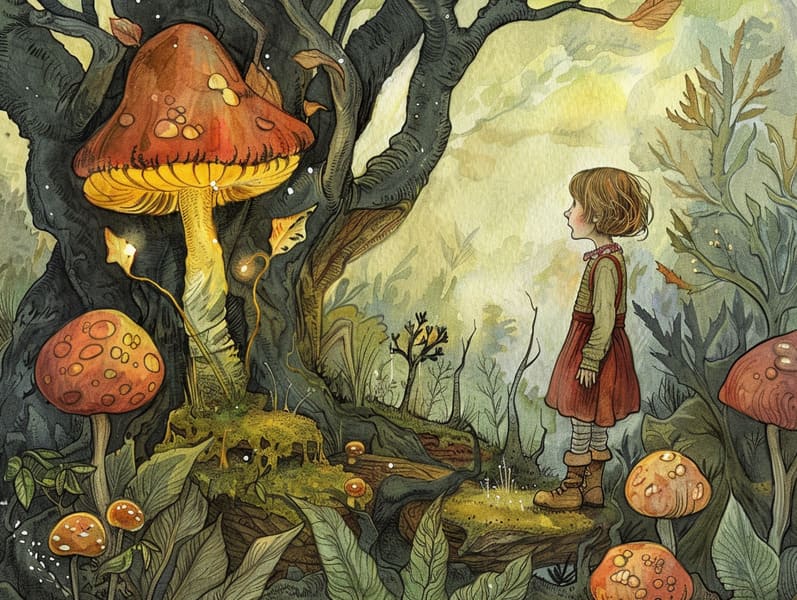The Evolution of Mythical Fairy Tales and Its Steadfast Elegance.
The Evolution of Mythical Fairy Tales and Its Steadfast Elegance.
Blog Article

Fairy tales for kids have timeless appeal. These narratives have been told from one generation to the next well before they were ever transcribed. They originated from a variety of traditions, including European traditions. They were initially disseminated among adults, often carrying themes and messages related to the societal norms and beliefs of the time.
Jacob and Wilhelm Grimm, the two Grimm brothers, were among the first to compile and publish many of these beloved tales. Their published works, "Grimm's Children's Stories," included classics like "Cinderella," "The Story of Hansel and Gretel," and "Schneewittchen," which have since become pillars in the world of classic fairy tales. Similarly, Hans Andersen's fanciful tales, such as "The Mermaid's Tale," and "The Story of the Ugly Duckling," have gained the love worldwide, securing their place in the pantheon of iconic fairy tales.
Though they are old, fairy tales remain as relevant as ever, especially as kids' bedtime tales. These enchanting tales are now available in numerous formats, including richly illustrated books, delightful animations, and digital fairy tales.
Their continued relevance can be linked to several magical reasons:
Key Lessons: Ancient fairy tales often convey important moral lessons. Fairy tales like "The Shepherd Boy and the Wolf" teach the virtue of integrity, while "The Race of the Tortoise and the Hare" demonstrate the virtues of perseverance and unassuming nature. These tales offer young readers clear distinctions between good and bad, forming their moral compass in a mild yet meaningful way.
Compassion and Insight: Fairy tales frequently depict characters facing challenges and problems, inciting young listeners to sympathize with their struggles and applaud their triumphs. For instance, "Beauty's Beast" points out the merit of looking beyond appearances to acknowledge the inner core of a individual, advancing sympathy and discernment.
Cultural Appreciation: Many old fairy tales are steeped in the cultural contexts from which they were born. Exploring these tales can provide informative snapshots into different heritages, cultivating a sense of global awareness and knowledge.
Fantasy and Innovation: The fantastical elements in classic fairy tales—fairy godmothers—trigger children’s dreaming abilities. These stories carry readers to otherworldly realms, revitalizing innovative dreams and a sense of amazement that stays a lifetime.
Ancient fairy tales are not only whimsical but also didactic. They provide fascinating tools in strengthening various brain and heart skills in children. When ancient fairy tales are spoken out loud, they strengthen linguistic abilities by introducing new terms and meanings and complicated sentence structures. This practice also develops hearing abilities and attention, as children remain attentive, looking forward to see what happens next.
Furthermore, reflecting on the themes and characters of classic fairy tales can strengthen thought processes and logical thinking. Little ones learn to notice patterns, guess what will happen, and grasp cause and effect. These discussions also advance little ones articulate their thoughts and feelings, cultivating their emotional intelligence.
In today’s digital era, the availability of web-based fairy tales has made these narratives more accessible than ever. Websites and programs present comprehensive collections of classic fairy tales that can be enjoyed or listened to anytime, anywhere. Fairy tales read out loud are particularly favored, featuring an fun way for young readers to appreciate these bewitching tales. Read-aloud stories and read-aloud videos transport characters and settings to life, often accompanied by captivating sound effects and soundtracks that heighten the storytelling journey.
The everlasting appeal of old fairy tales lies in their ability to shift to changing times while preserving their basic principles. Contemporary revisions of these narratives often incorporate more representative figures and modern settings, making them familiar to today’s audience. popular fairy tales with morals However, the basic principles of daring, sympathy, and justice remain unchanged, continuing to influence listeners of all ages.
Classic fairy tales also offer a sense of comfort and homeliness. They put out a methodical narrative with a unmistakable beginning, middle, and end, often concluding with the termination of conflicts and the triumph of rightness over wrongness. This constancy can be placating for children, extending a sense of firmness in an unstable world.
Traditional fairy tales continue to captivate and enlighten new generations, maintaining their elegance and impact in modern society. As bedtime stories for kids, they present a perfect blend of allure and teaching, encouraging moral values, empathy, and creativity. The prevalence of digital storybooks and the prevalence of fairy tales voiced confirm that these classic narratives remain acquirable to new generations.
By conserving and passing on these fairy tales, we continue to exalt the rich tapestry of mythology and cultural heritage. Whether you are exploring a richly illustrated book, experiencing a web-based collection, or listening to an spoken story, the beauty of classic fairy tales is always within reach. These tales emphasize of the eternal strength of stories and its ability to bring us together across generations and cultures.
If you are seeing a beautifully illustrated book, accessing a internet collection, or listening to an voice book, the splendor of timeless fairy tales is always within reach.
These tales highlight of the endless ability of stories and its ability to connect us across eras and regions, forming a connection that charms and informs alike.